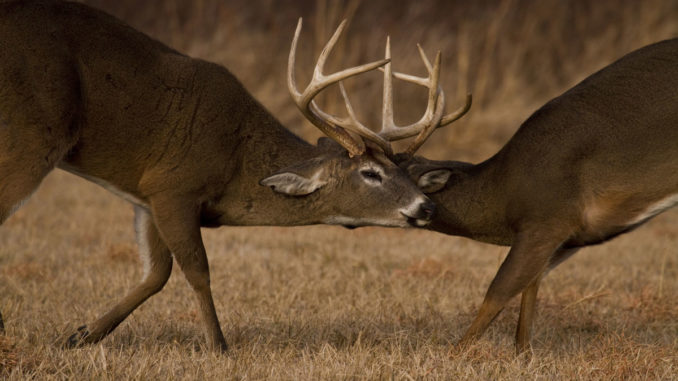
When is the peak of the whitetail deer breeding season across the Carolinas? Well, that depends on where you are and, to some extent, what’s going on, but here are biologists’ best guesses.
The rut, the peak of whitetail breeding, is the most eagerly awaited portion of deer season for a very good reason: big bucks are on the move. The reproductive urge in high gear means deer move literally around the clock.
Charles Ruth, the biologist who oversees deer for the S.C. Department of Natural Resources captured in a single sentence how and why the rut dramatically impacts deer hunters.
“The rut is the period when the urge to reproduce and propagate the species trumps even a big buck’s normally very high-level survival instinct,” he said.
Many sportsmen in the Carolinas hunt throughout deer season; others try to time the rut, hoping to focus on the most-productive hunting opportunities. Knowing how deer behavior changes when the rut is imminent is a crucial signal.
Darrell Madden from Semora, N.C., a member of Bass Pro Shops’ Redhead pro staff, has hunted deer most of his 55 years. He said many keys to timing the rut can be observed. When the rut is near, he said deer of both sexes show a marked increase in activity.
“Significantly increased deer activity means the rut is near,” he said. “I look for deer activity by slipping into areas and using binoculars to scan fields, particularly isolated corners, as well as checking roads and edges from long range. I also observe a corresponding decrease in deer activity (around) what had been productive early season stands as a sign of deer on the move. This movement is usually from early season patterns to habitat conducive for breeding season.”
Madden get deeper in the habitat looking for scrapes, rubs and other buck sign relating to the rut, usually during the middle of the day.
“I use this information to find areas where bucks are now, not where they were a week ago, because this change can happen quickly,” he said. “Bucks will move to where does are hanging out. When I see numerous scrapes, along with rubs, I know bucks are using that area, and they are searching for receptive does. I’ll look for additional sign, such as heavily used trails, crossings of multiple trails and I determine the bedding, feeding and traveling routes. With this information I can set up to hunt an area rich in fresh deer sign.
“A good stand setup during the rut is as crucial as ever,” he said. “Big bucks lose some of their self-preservation sense during the rut, but they don’t become stupid overnight. The real advantage to hunters is the breeding instinct forces bucks and does to move more, and with a proper set-up — including having wind in our favor, restricting movement and controlling scent — we have our best opportunity of the season to see trophy bucks.”
Terry Hiers, who owns and manages Blackwater Hunting Services in Ulmer, S.C., agreed that deer activity will spike as the rut approaches in South Carolina’s Lowcountry.
“I know the rut is imminent when I start seeing a significant increase in deer activity, both day and night,” Hiers said. “I’m driving the same roads around the 8,000 acres we hunt nearly every day, and at some point deer activity suddenly increases significantly. I’ll begin seeing numerous bucks and does before dawn, mid-day and in the evening when taking and picking up hunters.
“In our part of South Carolina, we have lots of sandy soil, and a significant increase in deer tracks, particularly, running tracks, is visible,” he said. “The running track increases will be significant almost overnight, telling me we’re into a pre-rut phase.”
Hiers (803-671-4868) said the increase in running tracks and a corresponding increase in sightings of deer in specific areas is an indicator it’s time to hunt rut habitat.
“Even in pre-rut, deer activity increases significantly,” Hiers said. “Bucks are ready for breeding, but few does are receptive at first, but can change quickly toward the middle of October.
“My guides and I talk with hunters after every trip and make notes of deer activity, and of course, bucks and does seen or killed,” he said. “For our type operation, that’s another way to track deer patterns. When deer activity slows in an area but increases in others based on sightings by hunters, I can determine what type of habitat they are seeking.”
Hiers said he also talks to local deer processors in terms of when their peak times are for processing big bucks.
“The rut has a general timetable across the state, but the specific peaks will vary in different locations,” he said. “Using a resource like processors can help identify the timing of the peak in the specific area you hunt. We usually have several weeks of rut activity, but a cool snap can really turn it on or rev it up at other times in the mid-October to mid-November time frame.
Madden said that simply because the rut is wide open doesn’t guarantee hunters will see big bucks or even see many deer.
“It’s like anytime of the season; you’ve got to be in the right place at the right time,” he said. “With all the topographical changes we have in the Carolinas, no single type of habitat works in all cases as rut habitat; it’s a function of what’s available in the area being hunted. I cope with finding the right terrain on a given tract of land by following deer from where they are to where they want to be as the rut approaches.”
Hiers said that the out-of-the-way areas become favored spots during the rut; he also uses buck sign, especially scrapes, to clue him to good areas.
“Scrapes tell me the area where bucks are, and they’re in these areas looking for does,” he said. “During pre-rut, bucks are checking scrapes, but once the rut is on, I think bucks active with does generally ignore scrapes. When multiple scrapes in an area are suddenly not being tended, I think the rut is on.
Hiers said scrapes play another important role for hunting the rut. By checking scrapes and tracks and trails leading to them, he learns the directions deer are traveling, which helps with his stand set-up and approach.
“If a buck is working an area beginning from the south side, I’ll get a hunter into the stand from the north side and avoid leaving human scent along his route,” he said.
The transition from pre-rut to full rut can be as quick and simple as the passage of a cold front, he said.
“For our area, I track the harvest of what we kill, and rut activity may last a few weeks, but the times when the hunting is the hottest is often weather dependent,” Hiers said. “Cool snaps seem to turn deer on during the rut. When we get that combination of a cool snap during the rut, the already good deer movement can get wild during the daylight hours.”
Hiers and Madden have a common thought for hunting big bucks during the rut, specifically mid-day hunting.
“This is the time to stay in the stand longer in the morning and get in earlier in the afternoon,” Hiers said. “Deer movement can be good throughout the day. If big buck finds he’s without a doe, even if it’s mid-day, he’s probably going start looking for another right then. We can’t control what makes a deer move, but we can be in the stand as much as possible during the rut.”
Madden said he’ll often stay in the stand through the middle of the day, letting other hunters leaving stands push deer to him.
“Often, about 10 o’clock in the morning, other hunters usually leave stands, but during the rut I stay, and (I) have taken some trophy bucks mid-day,” he said.
Madden said the timing of the rut will vary by location, but the basic patterns will be the same. Deer activity increases significantly, and movement is likely anytime. With a good setup and due diligence in terms of scent, movement and wind, the rut can be a hunters best ally for taking a trophy buck.

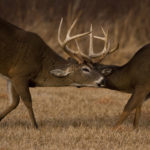
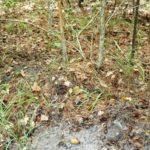
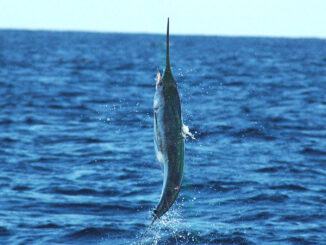
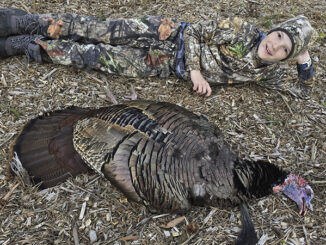
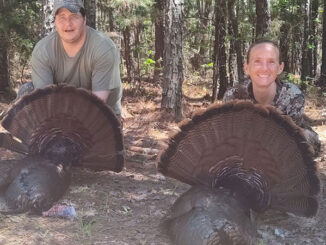

Be the first to comment